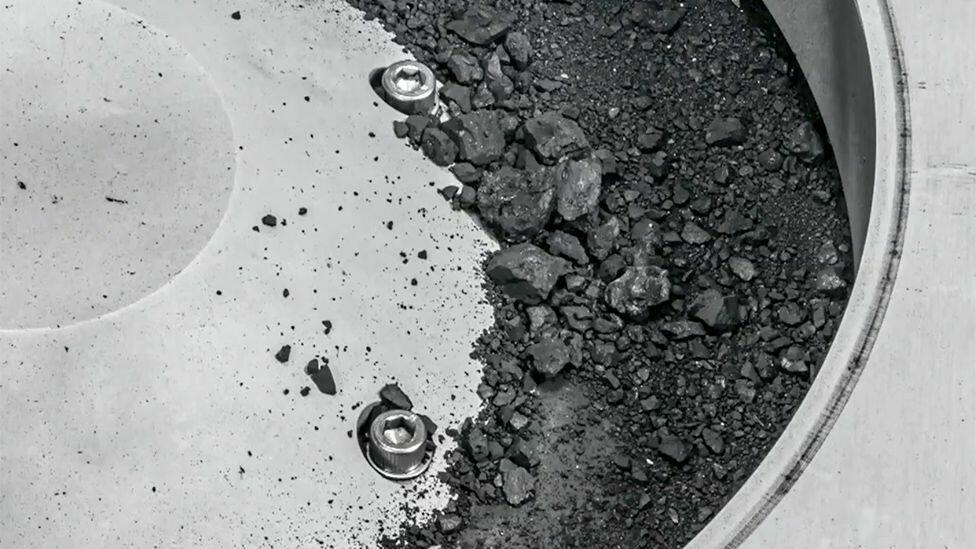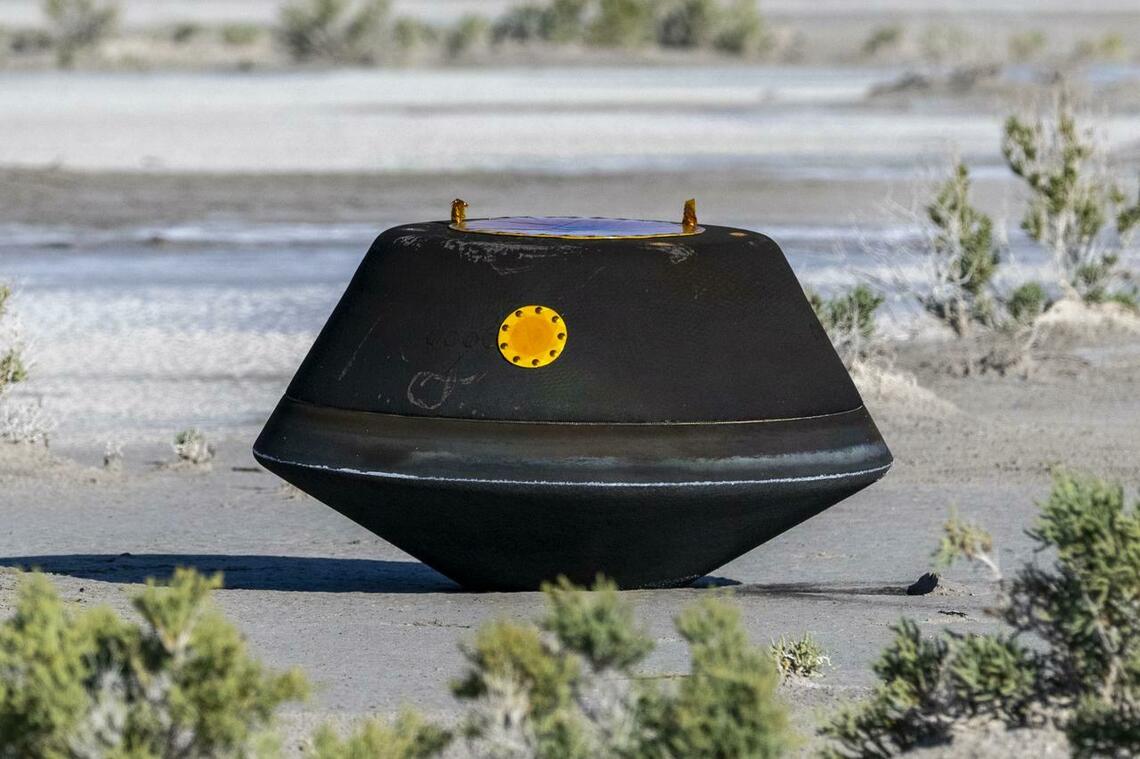Oct. 12, 2023
UCalgary professor has out-of-this-world opportunity to study NASA asteroid sample
Dr. Alan Hildebrand, PhD, has been waiting for the sample of asteroid Bennu for almost 15 years. Now, with the sample only weeks away from arriving, he’s ready to get to work.
“Honestly, I think it’ll be the most exciting when we have samples here, and we’re working on them and getting the results,” says Hildebrand, an associate professor in the Department of Earth, Energy and the Environment. He will be working with Lincoln Hanton, BSC ‘13, an extraterrestrial materials researcher.
OSIRIS-REx is NASA’s first mission to extract an asteroid sample from outer space and return it to Earth. Hildebrand became involved with a proposal led by the University of Arizona that was selected by NASA in 2010. The mission launched September 2016. Two years later, in December 2018, the spacecraft arrived at the asteroid. After another two years of imaging and mapping the asteroid, the sample was extracted. The sample return capsule landed in the Utah desert, on Sept. 24, 2023 — and Hildebrand was there to witness it.
He drove south with two friends to see the historic event. They found a quiet spot west of the Nevada-Utah border, turned their backs to the morning sun and waited for Bennu’s sample return capsule to fly overhead.
“We saw it for about 10 seconds, it was just a bright point of light rapidly moving across the sky,” says Hildebrand. “Three minutes later, we heard the double sonic boom from fifty kilometres above us.”
Because the Canadian Space Agency was responsible for one of the instruments on board — the OSIRIS-REx Laser Altimeter, used to scan and measure the shape of the entire surface of the asteroid and to help select the best site to collect the specimen — Canada will receive four per cent of the entire sample.

A view of the outside of the OSIRIS-REx sample collector, released earlier this week. Scientists have found evidence of both carbon and water in initial analysis of this material. The bulk of the sample is located inside.
NASA/Erika Blumenfeld & Joseph Aebersold
Hildebrand is one of four Canadian scientists participating in the mission as co-investigators who will receive a sample for research. He sees the importance of studying this kind of material as fundamental to our understanding of how we got here.
“All asteroids, all meteorites, basically date back to the origin of the solar system and are as old or older than our planet. If you want to find clues to how solar systems started, this is one way to do it,” he says, adding that this field of study is really “the knowledge frontier.”
Earlier this week, NASA announced that initial studies of the 4.5-billion-year-old asteroid sample show evidence of water and high-carbon content. The space agency said the “secrets held within the rocks and dust from the asteroid will be studied for decades to come, offering insights into how our solar system was formed, how the precursor materials to life may have been seeded on Earth, and what precautions need to be taken to avoid asteroid collisions with our home planet.”
Hildebrand and Hanton will measure the seismic velocities and shear strength of the sample. With that information they can understand how the material reacts to impact and other stresses. Other teams will study aspects like thermal properties to better understand the asteroid’s future orbit — critical for an asteroid like Bennu which has a (very, very small) chance of colliding with the Earth in more than 150 years.
Bennu is unique several ways. It has a dark colour, similar to the colour of Tagish Lake meteorite, the rarest in the University of Calgary collection. One of the questions Hildebrand wants answered is why Asteroid Bennu has a different colour than most other dark asteroids. The asteroid sample also arrived in a capsule — perfectly preserved — and Hildebrand knows how rare that is when studying meteorites.
“Normally, once the most fragile carbon-rich meteorites get to the ground, after it rains on them for a year, they just crumble to dust. They don’t last. With Bennu, it’s a chance to get this material totally pristine.”
Hildebrand expects the sample to arrive in the next few weeks. It will be coming from NASA's Johnson Space Center south of Houston. The University of Calgary team will receive a representative of each type of rock that is part of the asteroid sample, which is expected to total approximately 250 grams.

The sample return capsule from NASA’s OSIRIS-REx mission is seen shortly after touching down in the desert, Sunday, Sept. 24, 2023, at the Department of Defense's Utah Test and Training Range.
NASA/Keegan Barber







